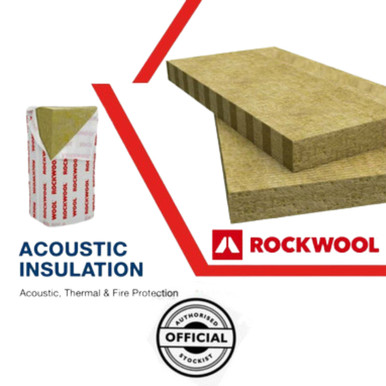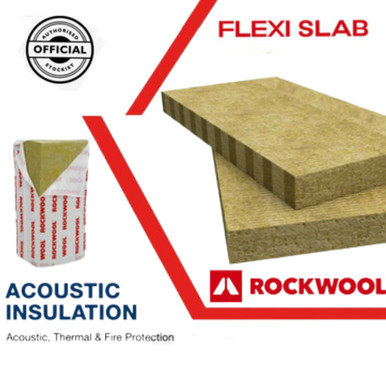Introduction
Sheep wool insulation is no longer regarded as an outlandish solution in the construction industry. Its popularity stems from increased public and construction industry awareness of the health benefits and performance of natural fiber insulation.
The primary focus of insulation was primarily on thermal, acoustic, or fire resistance, with little regard given to the material used outside of that frame.
New buildings must now adhere to stricter regulations than ever before, resulting in more efficiently insulated structures. The emphasis on creating intelligent buildings and airtight structures introduces new challenges, requiring the industry to devise new approaches to water vapour control (AKA moisture management).
Given the amount of time we spend indoors, indoor air quality has become an important consideration in modern design. Especially when scientific studies suggest a link between volatile organic compounds (VOCs) and a negative impact on cognitive abilities.
That's where nature steps in with its own solution. One of the distinguishing characteristics of sheep wool is its unrivaled breathability.
Indoor Air Quality: A Cleaner Environment
Many common household furniture, items, and finishes, whether in paint or wood, emit potentially hazardous levels of chemicals known as VOCs.
Sheep wool effectively cleans the air by sucking VOCs from it.
Wool is a natural protein composed of various amino acid chains, 60 percent of which have a reactive side chain. These reactive chains allow the wool to absorb odors and harmful chemicals like nitrogen dioxide, sulfur dioxide, and formaldehydes.
It effectively purifies the air and provides obvious health benefits by neutralizing those. Not only that, but it accomplishes it in a relatively short period of time. Experiments conducted by German academics in 1999 revealed that wool removed between 80 and 87 percent of the formaldehyde concentration in a test chamber.
Temperature Resistance:
Wool outperforms all other types of insulation in terms of thermal conductivity, with only Sprayfoam outperforming it.
Thermal conductivity is a measurement of heat transfer from one material to another. It is expressed in W/mK. The lower the achieved value, the better the insulator.
Thermal conductivity of sheep wool insulation ranges between 0.035 and 0.04 W/mk, compared to 0.044 W/mk for typical mineral wool.
While 200mm of sheep wool has a U-Value of 0.2, it frequently performs better due to its low thermal conductivity combined with its high moisture management properties.
These outcomes are due to the crimped nature of wool fibers. Wool fibers are naturally undulated and trap the air in millions of tiny air pockets, which in turn, form a natural thermal barrier. Wool is so effective that tribes in western Africa have used it for insulation since the dawn of sheep.
Sheep Wool Will Not Burn In A Fire, Period!
Wool simply does not burn due to its high moisture content (nitrogen). It has a natural flame resistance and self-extinguishing properties. It is one of the few fibers that can withstand fire and self-extinguish once the source of the flame is removed.
Moisture Control: It Regulates Humidity.
Moisture Control: It Regulates Humidity.
The breathability of sheep wool distinguishes it from the rest of the pack. Unlike products that use fiberglass, it does an excellent job of removing condensation and moisture from the air without compromising its thermal performance.
It can absorb up to 35% of its weight in moisture without becoming wet. Wool fibers generate tiny amounts of heat in this process, which prevents condensation by keeping the temperature above the dew point.
This ability to generate heat acts as a buffer against heat change, which is common in humid conditions. In practice, this means that there is less need to adjust heating and cooling levels on a regular basis. Sheep wool keeps a building cool during the day and warm at night.
Moisture management is achieved once more thanks to the nature of sheep wool fiber. The fiber's core is hygroscopic, meaning it can absorb and then expel water vapour. As a result, it is frequently used in applications where condensation is more prevalent, such as a loft space.
Sound Insulation: It Reduces The Transfer Of Sound Through The Air.
If all of the preceding reasons aren't enough, let's talk about acoustic insulation. Again, sheep wool outperforms all other types of wool materials in terms of sound insulation. This alone explains why more and more schools and offices are turning to sheep wool insulation to keep the peace between their walls.
The multitude of layered wool fibers significantly reduces airborne sound transfer.
Sheep Wool is Easy to Work with Because It Does Not Itch.
It is the safest type of insulation to work with; imagine yourself in a whoolly jumper warehouse. The substance is completely safe. Unlike when working with mineral wool, there is no need to wear protective gear, a mask, and goggles when installing sheep wool.
As a result, it's an excellent choice for a typical DIY project like loft insulation. Because it is chemical-free, safe to handle, and completely dust-free, there is no need for protective clothing.
Sustainability
Wool is a natural resource that has been engineered to save energy. When it comes to sustainability, all other insulation products pale in comparison. It is environmentally friendly, renewable, and recyclable (it can easily be remanufactured or biodegraded).
As a finished product that uses less than 15% of the energy required to produce glass fiber, it will pay back its energy costs more than 5 times faster than any other man-made insulation product (15kW of energy required to produce 1m3).
Not only is it energy efficient, but wool fibers are elastic and do not settle over time, which means it will continue to "expand" and retain its thickness throughout the building's lifespan, increasing insulation efficiency.
Install Sheep Wool Insulation to Benefit Your Body and the Environment
Someone correctly stated that we get the output based on the input provided. The same is true when it comes to insulating our homes. As we work to raise awareness about the importance of sustainability and good health, these techniques provide an entry point to sustainable products that can contribute to overall health within a building.
Why Choose Sheepwool Insulation?
People are beginning to recognize the advantages of sheep wool insulation for their homes today. Because of the aforementioned reasons, there are still many people who do not understand why you would use sheep wool insulation, and these people only look at the price tag and not the true benefits over existing Glasswool or Rockwool products.
Why is Natural Wool preferred over other Insulation Materials?
If you are asked to name a material that is both safe for the user and safe for the environment, your answer will undoubtedly be sheep wool. Wool has been rated as the best conductor in comparison to others, with a conductivity of 0.039W/mK or higher. Because of its low conductivity, it is extremely difficult to transfer heat from one side to the other.
Because sheep wool insulation absorbs moisture from the atmosphere naturally, there is no need for vapour barriers because the cortex is hydrophilic. As a result, it absorbs a lot of moisture easily. Furthermore, the material is easily installed between joists and directly on top of the ceiling. Though the distance between joists varies from house to house, a distance of 370mm is considered to be the average.
Sheep Insulation Installation Made Simple
To allow for easy air circulation through the attic, leave a gap of about 50mm between the insulation and, say, a roof covering. To avoid unnecessary overheating, you can also place the insulation under electrical wiring. Because sheep wool insulation is very easy to handle, following some basic instructions will make installation much easier. First and foremost, it is recommended that enough sheep wool be taken up into the attic in one go in order to complete the job without having to go up and down to get more rolls. You can also distribute it to make it easier to access. Kneeling boards should be placed across ceiling joists to provide the best support. You can work your way out of the attic by beginning at the farthest point from the attic door. It's also easy to block ventilated eaves when insulating, so keep an eye out for these and leave enough space for your air to travel between the insulation and the roof.
The Amount of Insulation Required Depends on the Type of House.
You can use positioning sticks to lay rolls in order to reach difficult areas. However, during installation, take care to ensure that the gas vent and exhaust fans are not covered. To allow for easy breathing of these facilities, leave a gap of around 50mm all around chimneys, recessed lights, and flues. It's easy to get carried away and a little lazy when insulating in hard to reach areas and covering these facilities, but be vigilant and make sure you don't, even if your back hurts from bending into these areas.
It is recommended to trim rolls to fit gaps along uneven widths in joists or rafters. Finally, affixing a small roll of sheep wool to the top of your attic cover/door will ensure that the job is completed successfully. One thing to keep in mind is that the amount of insulation needed is entirely dependent on the type of house you have. In the UK, the standard thickness is 270mm, but most people install 300mm because it's just as simple, 150mm x 2 or 3 x 100mm overlaid in opposite directions.
Is Your Sheep Wool Insulation Clean?
Our 100% Sheepwool insulation is meticulously cleaned during the manufacturing process to ensure that your wool arrives in perfect condition. Other than warm soapy water used to clean the insulation in a series of baths over time, no chemicals are used during this process.
Due to the high humid climate and the product's ability to assist in the regulation of moisture / humidity, as well as the product's ability to absorb VOC's, our 100% Sheep Wool has become extremely popular in both the UK and Irish markets.
Because no other insulation product on the market can do this, sheep wool insulation is a must for any home or building.
Insulation4less is the industry's go-to source for all sheep wool and natural insulation products. Please contact us to discuss further, and our experts will be happy to answer any questions you may have. Simply by clicking this link insulation4less.co.uk, you can obtain the best Natural insulation products that will fully meet your needs. For orders over £300, we provide free nationwide delivery.
Conclusion
Builders are creatures of habit, and in an already competitive industry, they are understandably hesitant to specify sheep wool insulation. However, saving money on insulation is a waste of money when you consider the health benefits, lifespan, and energy cost savings that come with Sheep Wool. It actually pays for itself faster than any man-made substitute.
Nature has always served as a source of inspiration for technological innovation and intelligent design, and sheep are currently at the forefront of those innovations.








